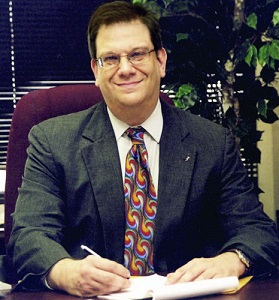May 2016, Vol. 243, No. 5
Editor's Notebook
Understanding Both Sides of the Infrastructure Issue

A new book should be at the top of the reading list for everyone in the industry. It’s entitled The Green and the Black, The Complete Story of the Shale Revolution, the Fight over Fracking, and the Future of Energy, by Gary Sernovitz, a managing director of an oil and gas private equity firm in New York City.
Since President Obama’s rejection of the Keystone pipeline last November, opposition to proposed infrastructure projects, especially pipelines, is mounting through well-financed and well-organized efforts by the environmental lobby. April 18-22 was a very discouraging week as Kinder Morgan threw in the towel on its Northeast Direct (NED) project and New York State denied Constitution Pipeline’s request for a water permit after letting it linger for 18 months.
All is not yet lost. Williams plans to appeal New York’s decision. Spectra’s Access Northeast is somewhat similar to NED but stands a better chance as it’s essentially an expansion of the Algonquin Pipeline.
On April 25, I received word of a new report by a group called the Institute for Energy Economics and Financial Administration (IEEFA) that wants to block the proposed Atlantic Coast Pipeline (ACP) and Mountain Valley Pipeline (MVP) in the mid-Atlantic region. The IEEFA pushes renewables, particularly solar, and was founded in 2011 to help kill the coal industry. Now it’s turning its attention to natural gas.
Those with a stake in the industry need to clearly understand both sides of the infrastructure issue, something Sernovitz explains quite well in his book. He acknowledges the shale revolution has not come without a cost as not every property owner has benefited; instead, many are subjected to physical inconveniences caused by the development. But he points out that the shale development has fit in well with Obama’s oft-repeated “all of the above” energy strategy, and that he has done nothing to stop fracking except on federal lands.
Sernovitz debunks the controversial movie Gasland and its outlandish allegations, including water contamination. In fact, “the shale revolution has, nationally speaking, made American water sources safer by rendering drilling in those types of fields (some shallow gas shales in the Midwest and coalbed methane field in the Rockies like the ones shown in Gasland) almost wholly unprofitable.”
He also heaps scorn on the “Drilling Down” series published in 2011 by The New York Times, which helped frame the argument against fracking. “It would have been more accurately titled ‘Everything Negative I Could Think to Write About Natural Gas Drilling’…caused me to burn with embarrassment at its obtuseness on how regulation works, how the oil industry works, how drilling works.”
Sernovtiz doesn’t debate the threat of climate change and the role played by fossil fuels, but suggests ways to mitigate it through technology, efficiency gains and cleaner energy mix led by natural gas. Gas is already providing a cheap and abundant source of fuel for power generation, as he cites a 6% projected increase in gas-fired power plant generating capacity through 2023, representing nearly half of all new capacity from renewable and nonrenewable sources.
Here’s why we need more pipelines and power plants: In 2014, Sernovtiz writes, America used on average only 29% of its theoretically available natural gas-fired power generating capacity. Gas producers at the end of 2014 were drilling with only 23% of the rigs they were using at the start of 2009. Not only that, methane is not the calamitous issue that opponents claim it to be; those emissions fell by over 4% from 2003-13 at a time when U.S. gas production rose by 32%. The U.S. has also led the world in carbon dioxide emissions reduction because of shale gas.
So, who benefits if fracking is banned in the U.S. as Bernie Sanders wants, or made much difficult, as Hillary Clinton vows?
“The single best thing that could happen to the oil sands today, 20 times better than Keystone’s approval, the object of all the prayers of Fort McMurray, Alberta, would be a U.S. ban on fracking. Oil prices would skyrocket. The oil sands would be necessary again,” Sernovitz says.
And for those who tell you that solar is the ultimate answer, try this bit from Sernovtiz’s book: “A 2013 study by two Stanford professors noted that until 2010, it took more electricity to produce solar panels collectively than the electricity they were generating. The professors forecast that the panels globally will have ‘paid back’ that energy in 2020.”
Nuff said! Now get out there and fight.





Comments